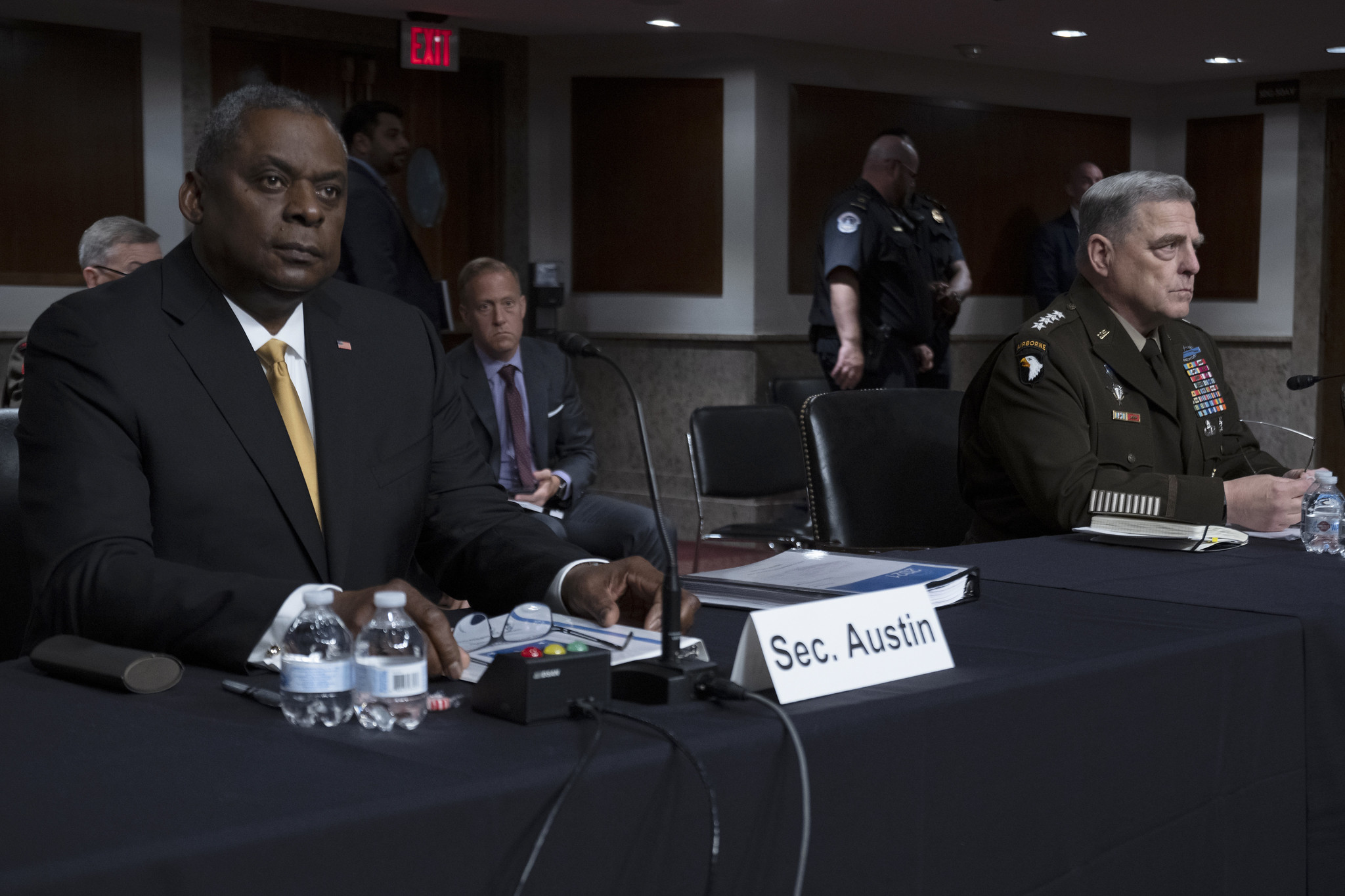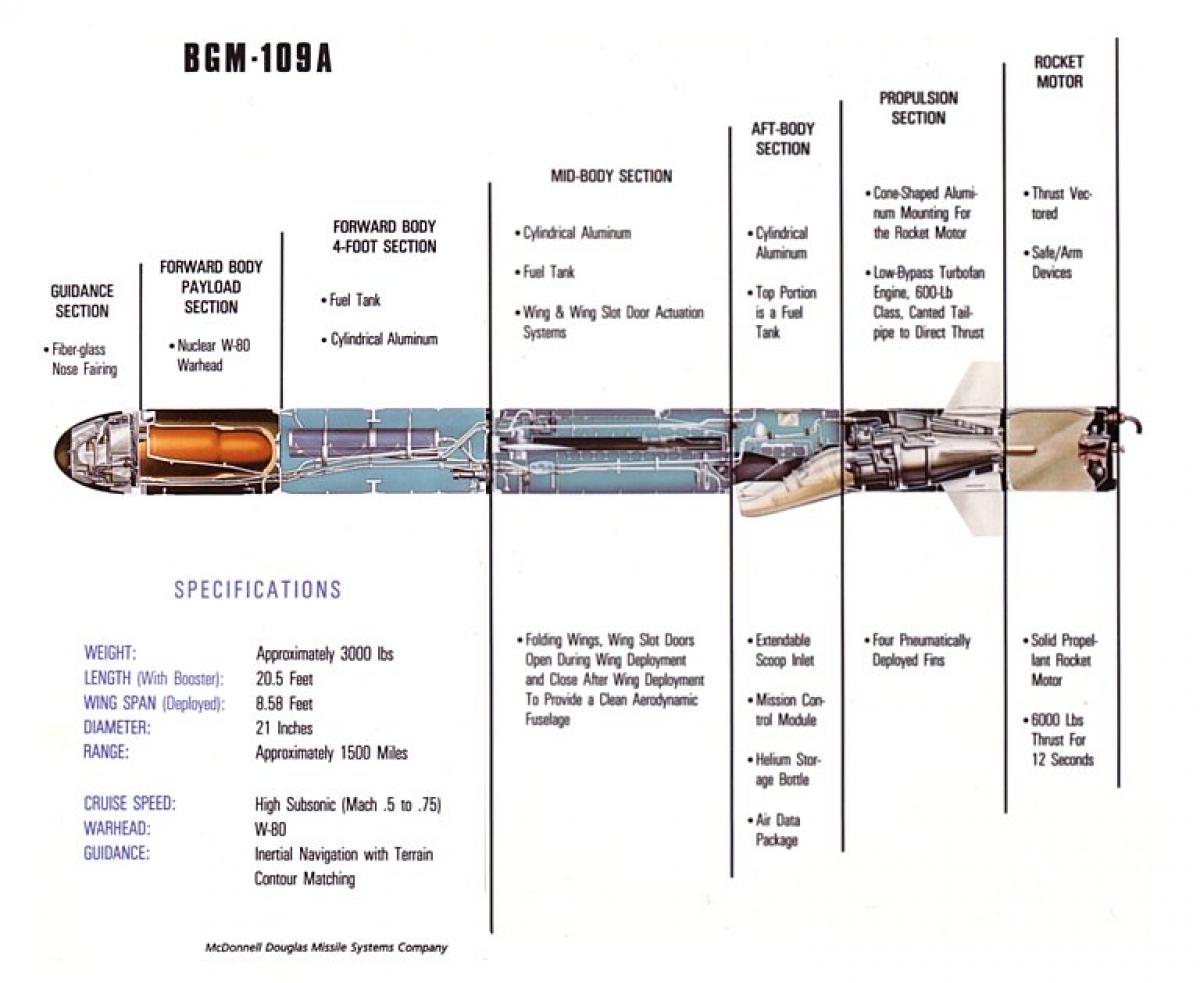
Pentagon leaders faced tough questions from lawmakers on the Navy’s decision to shelve the development of a sea-launched nuclear cruise missile during a Thursday budget hearing before the Senate Armed Services Committee.
Several Republican lawmakers voiced concerns about acting Navy Secretary Thomas Harker’s plans to ax the missile’s funding as part of a Fiscal Year 2023 budget priorities memo reported by USNI News on Tuesday.
“I find it very concerning that an acting service secretary who hasn’t been confirmed by the Senate is making a decision like this, outside of any review process, without analysis, or input from [Office of the Secretary of Defense] policy, from Nuclear Matters, the Joint Chiefs or [U.S. Strategic Command], and without talking to other agencies or having, it seems, any discussions with our allies,” Sen. Deb Fischer (R-Neb.) said during the hearing.
“I don’t think this is the right way to make decisions about nuclear policy,” she added.
Both Defense Secretary Lloyd Austin and Chairman of the Joint Chiefs Gen. Mark Milley confirmed to lawmakers that they had not seen the memo, which was a document for the Department of the Navy’s budget planning process.
“I have not seen the memo, but I would say that all of us, all the services, and the department, are again making tough choices in terms of what to prioritize and where to accept risk. That memo has to be pre-decisional because of where we are in the process,” Austin said. “And so I don’t feel comfortable in commenting on his memo. I would just say that, again, I am committed to a [Nuclear] Posture Review to make sure that we adequately analyze what our capabilities are, what’s needed in the future, and that we maintain the right balance in our nuclear forces going forward.”
Milley said he would look into the memo following the hearing.
“I’m not familiar with the memo and nor was I consulted. But as soon as we’re done here, I’ll go find that memo and get consulted,” he told lawmakers.
Sens. Joni Ernst (R-Iowa) and Marsha Blackburn (R-Tenn.) also expressed concerns over the memo’s directive about the Sea-Launched Cruise Missile. Blackburn asked why the Navy made the decision prior to the completion of a nuclear assessment.
“As I understand, the purpose of that memo was to issue some guidance for planning and evaluation to the Navy,” Austin responded. “But again, I am committed to conducting a Nuclear Posture Review that we talked about earlier.”
Austin emphasized to Ernst that the Nuclear Posture Review would inform a decision about the capability.
“We will be true to our posture review and make sure that that drives the process,” the defense secretary said.
Privately, Navy leaders have told lawmakers the introduction of nuclear cruise missiles to the fleet would present both budgetary and logistical headaches for the service, several defense and legislative sources told USNI News on Thursday.
For the Navy, a major barrier to developing a new sea-launched cruise missile is the operational limitations the service would face fielding a nuclear weapon on its fleet of surface ships or nuclear attack submarines. The ships are now armed with only conventional weapons since the nuclear-tipped Tomahawks (TLAM-N) left the Navy’s inventory in the early 1990s, according to the Center for Strategic and International Studies.

Putting nuclear weapons aboard ships would require strict onboard security protocol to protect the warheads. In the past, the Marines would provide a special security detachment to guard the warheads. Additionally, the U.S. could be limited on ports-of-call if its ships are armed with nuclear weapons. Several countries have bans on ships armed with nuclear weapons visiting their ports and the U.S. has a policy of neither confirming nor denying if nuclear weapons are aboard. In 1984, New Zealand strained relations with the U.S. after it turned away USS Buchanan (DDG-14) for not declaring if the ships possessed nuclear weapons. New Zealand only reversed the decision in 2016, USNI News reported at the time. Additionally, allies operating with U.S. Navy vessels may be reluctant to do so if there was potential that nuclear weapons were aboard, one legislative source told USNI News.
The service also has multiple large fiscal responsibilities in future budget years, including the Columbia-class submarine, the Constellation frigate program, and developing the Navy’s next-generation destroyer, submarine and fighter aircraft.
While it’s unclear where the Navy is headed in future budgets with the missile, the recent FY 2022 budget request is seeking $5.2 million in research and development money to develop the capability.
“This project will design, develop, produce and deploy a Nuclear-Armed Sea-Launched Cruise Missile (SLCM-N). SLCM-N is scoped to deliver an integrated flight system and to continue to advance SLCM-N capabilities to fully address requirements identified in the 2018 Nuclear Posture Review, SLCM-N Initial Capabilities Document, and examined in the Analysis of Alternatives to mitigate a lack of a sea-based tactical nuclear-based system,” the budget justification books read.
The 2018 Nuclear Posture Review led by the Trump administration called for the Pentagon to pursue low-yield nuclear weapons. While Republican lawmakers want to develop the capability, Democrats and President Biden have openly opposed developing the weapons.
“The United States does not need new nuclear weapons,” Biden told the Council for a Livable World in a 2019 questionnaire that was updated a month ahead of the 2020 election. “Our current arsenal of weapons, sustained by the Stockpile Stewardship program, is sufficient to meet our deterrence and alliance requirements.”





